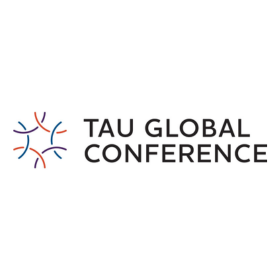All the events here are relevant to people working in dementia research. If you would like to add your own you can submit an event

- This event has passed.
ISTAART Guide to AAIC: Podium Presentations
29/06/2023 @ 4:00 pm - 5:00 pm

Will you be stepping up to the podium to present your research at the AAIC in July? If the answer is yes, then this webinar is a must attend.
Join us for a step-by-step guide, an overview of logistics, and expert insight from Dr Melissa Murray.
Can’t wait until July? The here are a quick top 10 tips for giving a great scientific presentation:
- Dive into the details: Since your audience is knowledgeable, don’t shy away from diving into the technical details of your research. Provide in-depth explanations of your methodology, data analysis techniques, and results to showcase the rigor and complexity of your work (if you have time).
- Demonstrate novelty and significance: Emphasise the novelty and significance of your research right from the beginning (assuming it is novel, and even if not, say why you think it is). Highlight how your work pushes the boundaries of current knowledge and opens up new avenues for exploration in the field.
- Showcase the methodology: Present a detailed account of your experimental or computational methodology. Discuss any novel approaches, methodologies, or techniques you employed and explain their advantages and limitations.
- Discuss alternative interpretations: Acknowledge that intelligent audiences may have alternative interpretations or perspectives. Address these possibilities and explain why you arrived at your specific conclusions. Engage in a thoughtful discussion that demonstrates your expertise and critical thinking.
- Provide supporting evidence: Back up your claims and findings with robust and compelling evidence. Include relevant data, figures, and statistical analyses to support your arguments. Present the evidence clearly and explain how it aligns with your research objectives.
- Discuss implications and future directions: Explore the broader implications of your research and discuss potential future directions. Address the relevance of your findings to other related fields and how they may contribute to solving larger scientific challenges.
- Be prepared for technical questions: Expect that your audience will ask highly technical and detailed questions. Prepare yourself by thoroughly reviewing your research and being well-versed in related literature. Be ready to engage in intellectual debates and defend your research with evidence.
- Anticipate counterarguments: Identify potential counterarguments to your research and proactively address them. Anticipating opposing viewpoints and demonstrating your ability to navigate them will showcase your intellectual rigor and confidence.
- Use visuals strategically: Utilise visuals such as graphs, charts, and diagrams to present complex data and concepts efficiently. Ensure your visuals are of high quality and clearly labeled to facilitate the audience’s understanding. Be prepared to discuss and interpret the visuals in detail.
- Foster collaborative discussions: Encourage collaborative discussions with the audience to foster intellectual exchanges. Welcome constructive feedback, suggestions, and alternative viewpoints. Engage in meaningful dialogue that stimulates further scientific exploration.
Remember, when presenting to an intelligent and familiar audience, your goal is not only to present your research but also to engage in a stimulating intellectual exchange. By following these tips, you can effectively communicate the intricacies of your research and inspire thought-provoking discussions among the audience members.




